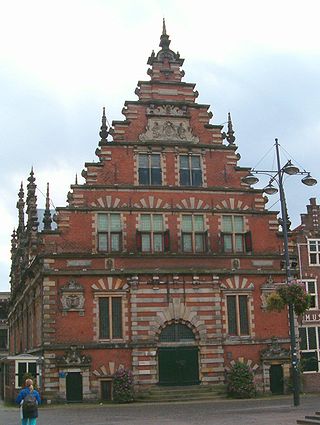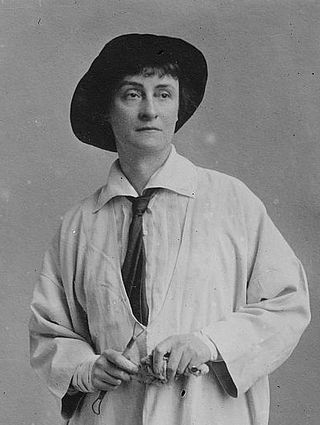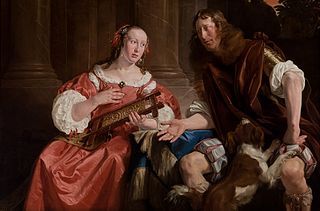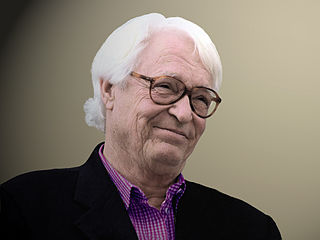
Maya Ying Lin is an American architect, designer and sculptor. Born in Athens, Ohio to Chinese immigrants, she attended Yale University to study architecture. In 1981, while still an undergraduate at Yale she achieved national recognition when she won a national design competition for the planned Vietnam Veterans Memorial in Washington, D.C. The memorial was designed in the minimalist architectural style, and it attracted controversy upon its release but went on to become influential. Lin has since designed numerous memorials, public and private buildings, landscapes, and sculptures. In 1989, she designed the Civil Rights Memorial in Montgomery, Alabama. She has an older brother, the poet Tan Lin.

Haarlem is a city and municipality in the Netherlands. It is the capital of the province of North Holland. Haarlem is situated at the northern edge of the Randstad, one of the more populated metropolitan areas in Europe; it is also part of the Amsterdam metropolitan area. Haarlem had a population of 162,543 in 2021.

Kenau Simonsdochter Hasselaer (1526–1588) was a wood merchant of Haarlem, who became a legendary folk hero for her fearless defense of the city against the Spanish invaders during the siege of Haarlem in 1573.

The City Hall in Haarlem is the seat of the city's government. It was built in the 14th century replacing the Count's castle.

Lieven de Key was a Flemish renaissance architect who after working in his native Flanders moved to work in the Dutch Republic. He is mostly known today for his works in Haarlem. His style is described by Simon Schama as Mannerist.

The siege of Haarlem was an episode of the Eighty Years' War. From 11 December 1572 to 13 July 1573 an army of Philip II of Spain laid bloody siege to the city of Haarlem in the Netherlands, whose loyalties had begun wavering during the previous summer. After the naval battle of Haarlemmermeer and the defeat of a land relief force, the starving city surrendered and the garrison was massacred. The resistance nonetheless was taken as an heroic example by the Orangists at the sieges of Alkmaar and Leiden.

Wigbolt, Baron Ripperda was the city governor of Haarlem when the city was under siege by the Spanish army in the Eighty Years' War.

Frans Hals Museum - Hal is one of the two locations of the Frans Hals Museum, located on the Grote Markt, Haarlem, Netherlands, where modern and contemporary art is on display in alternating presentations. The emphasis is on contemporary photograph and video presentations, with the focus on Man and society.

Janet Scudder, born Netta Deweze Frazee Scudder, was an American sculptor and painter from Terre Haute, Indiana, who is best known for her memorial sculptures, bas-relief portraiture, and portrait medallions, as well as her garden sculptures and fountains. Her first major commission was the design for the seal of the New York Bar Association around 1896. Scudder's Frog Fountain (1901) led to the series of sculptures and fountains for which she is best known. Later commissions included a Congressional Gold Medal honoring Domício da Gama and a commemorative medal for Indiana's centennial in 1916. Scudder also displayed her work at numerous national and international exhibitions in the United States and in Europe from the late 1890s to the late 1930s. Scudder's autobiography, Modeling My Life, was published in 1925.

Jan de Bray was a Dutch Golden Age painter. He lived and worked in Haarlem until the age of 60, when he went bankrupt and moved to Amsterdam.

Korstiaan"Kees"Verkade was a Dutch artist and sculptor. He specialized in modeling the human form, with an emphasis on movement and emotion. Most of his sculptures are set in bronze. They depict a variety of people, including children, clowns, athletes, dancers, mothers, and lovers. Verkade also created gouaches and silkscreens to accompany his sculptures.

The Proveniershuis is a hofje and former schutterij on the Grote Houtstraat in Haarlem, Netherlands.

The Stadsbibliotheek Haarlem is a collective name for all public libraries in the Haarlem area of the Netherlands. The first public library of Haarlem opened in 1921 at the cloisters of the Haarlem City Hall where the academic library had been since 1821. The move to open its doors to the public with a public reading room was only possible after the previous occupant of the downstairs cloisters, the Frans Hals Museum, moved out in 1913 to its present location. As of 2009, there are 6 public libraries and 10 lending points, such as in hospitals.

The Fundatiehuis is the former family home of Pieter Teyler van der Hulst on the Damstraat 21 in Haarlem, Netherlands. After his death it became the seat of the Teylers Stichting and through its front door, visitors could reach the Oval room.

Alicia Framis is a contemporary artist living and working in Amsterdam, Netherlands. She develops platforms for creative social interaction, often through interdisciplinary collaboration with other artists and specialists across various fields. Her work is project based and focuses on different aspects of human existence within contemporary urban society. Framis often starts out from actual social dilemmas to develop novel settings and proposed solutions. Framis studied with the French minimalist artist Daniel Buren and the American conceptual artist Dan Graham and her work can be located within the lineages of relational aesthetics, performance art, and social practice art. She represented the Netherlands in the Dutch Pavilion at the 50th Venice Biennale (2003). She is currently the director of an MA program at the Sandberg Instituut in Amsterdam, Netherlands and a lecturer at Nebrija University in Madrid, Spain. In 2019, Alicia Framis was awarded with the Lucas Artists Visual Arts Fellowship 2019-2022 in California.
Barbara Nanning is a Dutch designer, sculptor, monumental artist, ceramist and glass artist.
The following is a timeline of the history of the municipality of Haarlem, Netherlands.
Rita LongaAróstegui was a Cuban sculptor.

Hendrik Albertus van den Eijnde or van den Eynde was a Dutch sculptor. His work was part of the sculpture event in the art competition at the 1936 Summer Olympics.

Moments Contained is a 2022-2023 bronze sculpture on the Stationsplein, in front of Rotterdam Centraal station, Rotterdam, the Netherlands. It was created by artist Thomas J. Price, a London-based artist with Caribbean roots. A similar statue is on display at the Victoria and Albert Museum in London.


















